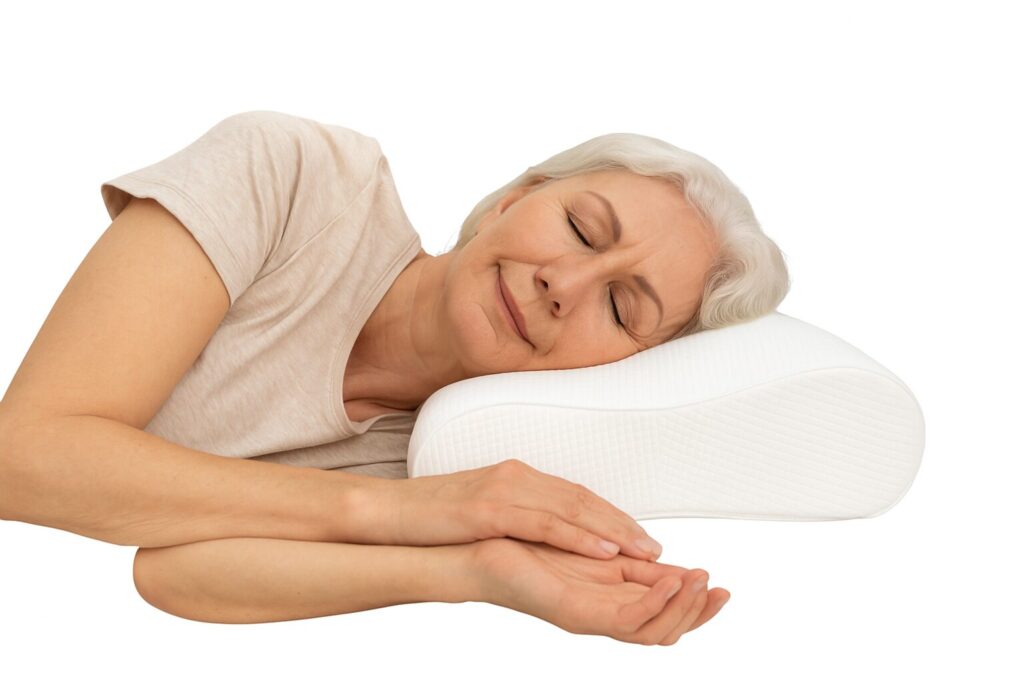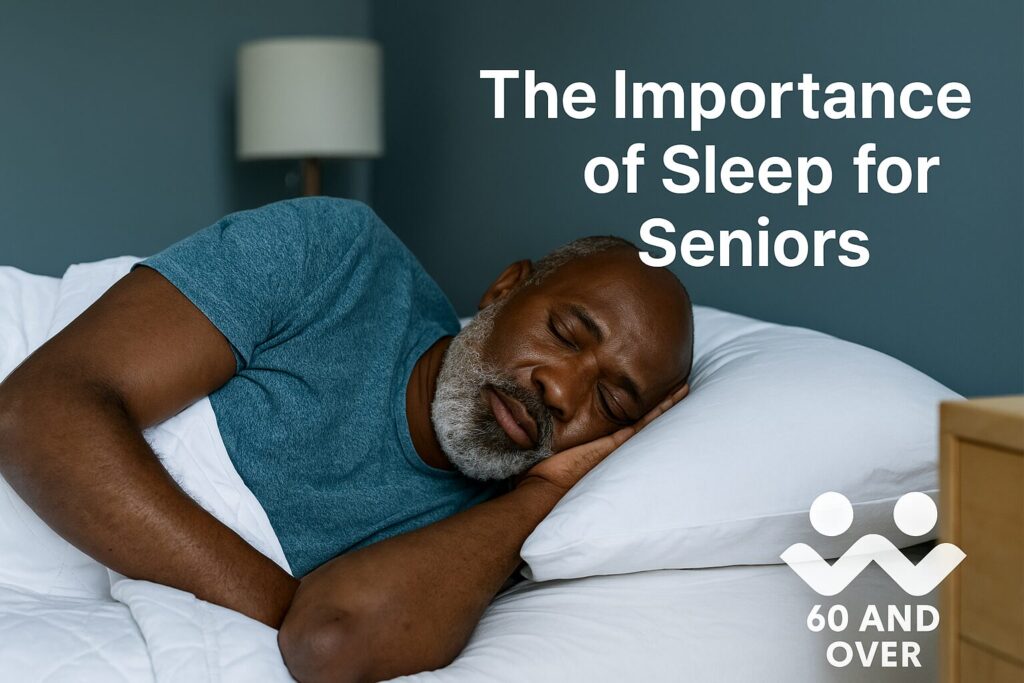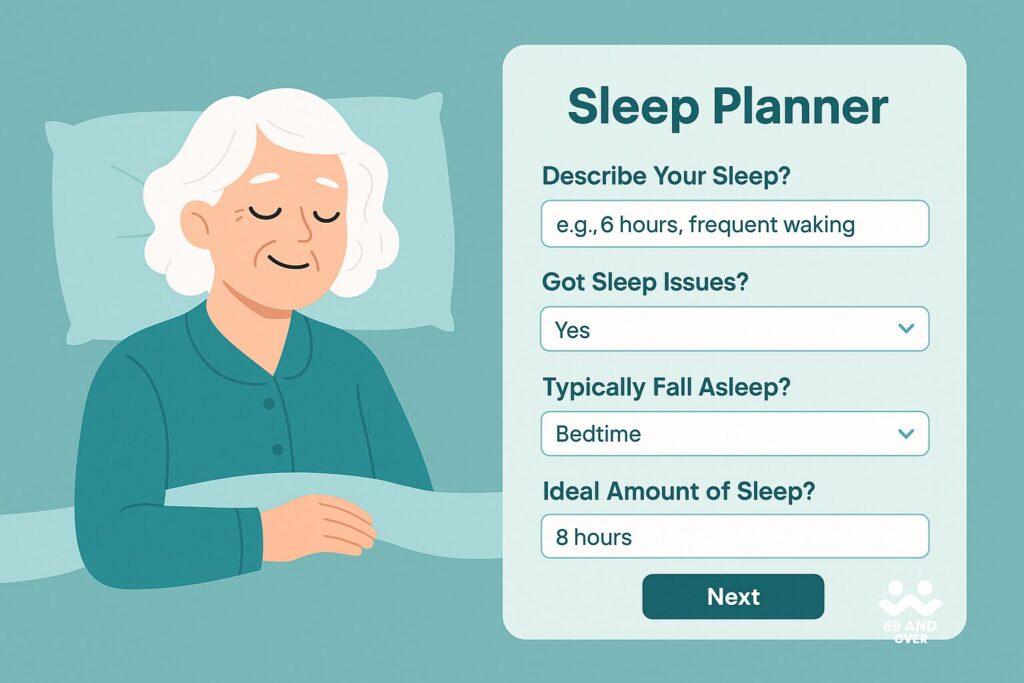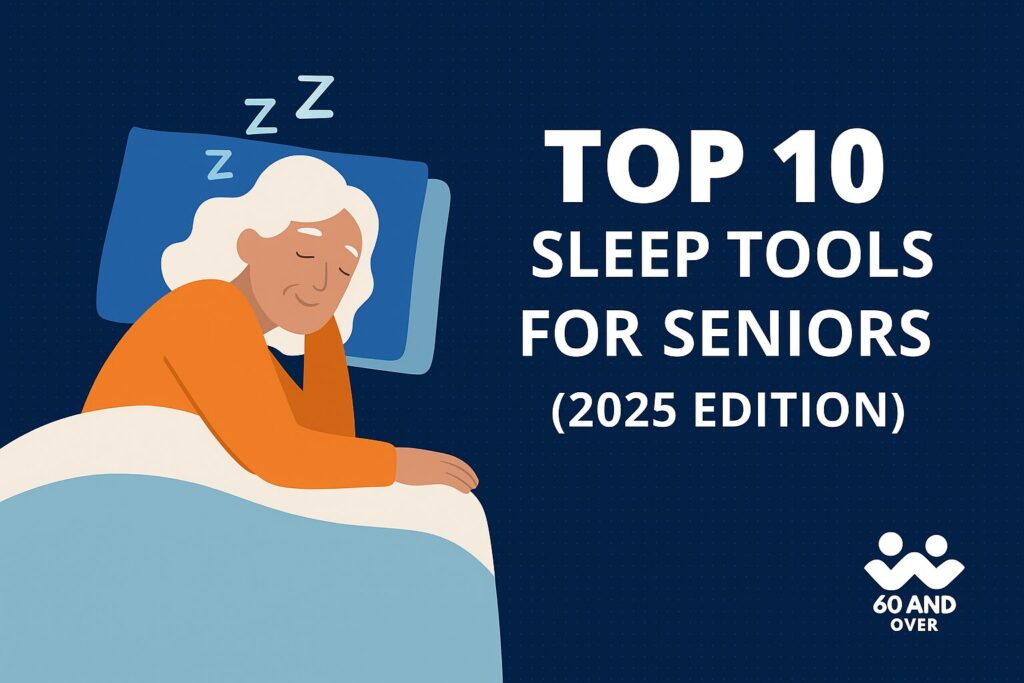Introduction: Why Pillows Matter More After 60
For most of our lives, sleep feels like a natural rhythm that doesn’t require much thought. We put our heads down, and our bodies take care of the rest. But as the years pass, something begins to shift. By the time we reach 60, many of us realize that the effortless rest of youth has become harder to find. Achy joints, stiff necks, poor circulation, and chronic health conditions make sleep more fragile. What used to be an afterthought now feels like a nightly battle.
The pillow is often the most overlooked tool in that battle. A regular pillow may be soft and fluffy, but for many older adults it does little to actually support the body’s needs. This is where orthopedic pillows enter the picture. Unlike standard pillows that simply provide a cushion, orthopedic designs are engineered with purpose: they align the spine, support pressure-sensitive joints, and even address specific health concerns like acid reflux or snoring.
In this review, we dive deep into the world of orthopedic pillows — what they are, how they work, and which ones truly deliver for adults 60 and over. We’ll explore scientific principles, personal stories, and product comparisons to help you decide which pillow might not just improve your nights, but also transform your days.

What Exactly Is an Orthopedic Pillow?
The word “orthopedic” often brings to mind hospitals, doctors, or medical devices, but in the pillow world it means something very practical: designed for alignment and therapeutic support. Orthopedic pillows are shaped and structured to hold the head, neck, spine, and sometimes other parts of the body in positions that reduce strain.
Consider the cervical contour pillow. Its wave-like design looks unusual compared to the flat surface of a regular pillow, but that curve is precisely engineered to cradle the neck and support the head without forcing the spine into an unnatural angle. For someone who wakes with a stiff neck every morning, this shape can be life-changing.
Then there are wedge pillows, triangular in shape, designed to lift the upper body slightly. For an older adult who struggles with nighttime acid reflux or GERD, lying flat can cause stomach acid to travel upward into the throat, disrupting sleep and causing discomfort. Elevating the torso with a wedge pillow creates a gravity-assisted barrier against reflux.
Orthopedic pillows come in many variations: lumbar pillows for lower back support, knee pillows that fit neatly between the legs for hip alignment, even cooling gel pillows that help regulate temperature for those dealing with hot flashes or night sweats. What they all have in common is intention. They are not about fluff; they are about function, and function matters most when the body has more needs.
Why Orthopedic Pillows Are So Valuable for Adults 60+
If you ask older adults about sleep, you’ll often hear similar complaints: “I can’t stay asleep,” “My neck hurts in the morning,” “I wake up with numb arms,” or “My reflux keeps me up at night.” These problems don’t appear out of nowhere — they are the result of aging bodies interacting with less-than-ideal sleep environments.
Take neck pain as an example. With age, the discs in the cervical spine lose hydration and flexibility, making them less able to cushion movement. Sleeping on a soft, unsupportive pillow can cause the head to sink too far, forcing the neck into awkward angles. Over eight hours, this translates into inflammation, stiffness, and even headaches. An orthopedic cervical pillow counters this by supporting the neck curve and keeping the spine aligned.
Back pain is another frequent culprit. Arthritis, degenerative disc disease, and muscle tightness make lying down uncomfortable. Orthopedic pillows redistribute pressure evenly, giving the spine a neutral resting position. For someone who has tossed and turned for years, the simple act of lying down without discomfort feels revolutionary.
There are also more subtle benefits. Side sleepers who wake up with sore shoulders can find relief from contoured pillows that keep the upper arm properly positioned. People who snore may discover that a pillow elevating their airway reduces the nighttime vibrations that disturb both their rest and their partner’s. And those with circulation problems, including swelling in the legs or ankles, can benefit from pillows that lift the limbs and reduce pooling of blood.
The larger point is this: sleep challenges in older age are often treated with medications, but many of these issues are mechanical. Orthopedic pillows address them at the structural level, offering a non-invasive, drug-free way to improve rest.
Exploring the Different Types of Orthopedic Pillows
Orthopedic pillows are not a single category but rather a family of solutions, each tailored to a specific problem. Understanding these types is key to choosing the right one.
Cervical Pillows are the most common. They feature a contoured design that supports the neck’s natural curve. For someone who frequently wakes with stiffness or headaches, this is often the best first step. Memory foam cervical pillows mold to the individual’s shape, providing personalized support.
Wedge Pillows are rectangular blocks cut on an angle. Their main purpose is elevation. A person who suffers from GERD, for example, can benefit from sleeping at a 30- to 45-degree incline. Similarly, those with poor circulation can elevate their legs with a wedge to reduce swelling.
Lumbar Pillows are smaller and designed for the lower back. While they are often used in chairs, many older adults place them behind the lower spine while lying down to maintain natural lumbar curvature.
Knee and Leg Pillows look like small hourglasses or blocks. They are particularly helpful for side sleepers. Placing one between the knees prevents the hips from twisting during the night, which reduces stress on the spine and eases sciatica.
Travel Orthopedic Pillows address a very different but important need: staying comfortable on long journeys. The U-shaped design keeps the neck upright and prevents drooping that can cause stiffness.
Cooling Gel Pillows combine contour support with temperature regulation. For older women dealing with hot flashes or anyone who experiences night sweats, the cooling effect helps sustain comfort.
Each type of orthopedic pillow has its niche, and in many households, more than one type proves useful. A cervical pillow may live on the bed for nightly use, while a wedge pillow is brought out when reflux flares up.
Side-by-Side Comparison of the Best Orthopedic Pillows
Because there are so many options, it’s helpful to compare the leading pillows in one place. Below is a comparison table that highlights some of the best products in different categories. On desktops it displays as a table; on phones it stacks into an accordion for easy scrolling.
Top Orthopedic Pillows Compared
| Product | Type | Key Features | Best For | Link |
|---|---|---|---|---|
| EPABO Contour Memory Foam Pillow | Cervical | Ergonomic contour, breathable foam, removable cover | Neck pain, back sleepers | Buy on Amazon |
| Elviros Cervical Memory Foam Pillow | Cervical | Wave design, side/back sleeper cutouts, hypoallergenic cover | Snoring, morning stiffness | Buy on Amazon |
| Coop Home Goods Adjustable Pillow | Adjustable | Shredded memory foam fill, height customization, washable cover | Mixed positions, shoulder fit | Buy on Amazon |
| Snuggle-Pedic Ultra-Luxury Pillow | Cooling/Adjustable | Bamboo cover, breathable shredded foam, airflow design | Hot sleepers, night sweats | Buy on Amazon |
| MedCline Reflux Relief Wedge System | Wedge (Torso) | Inclined system with arm pocket, clinically oriented reflux relief | GERD/acid reflux, shoulder pressure | Buy on Amazon |
| Cushy Form Bed Wedge Pillow | Wedge (Torso/Leg) | 12″ incline, multipurpose elevation, washable cover | Circulation, post-surgery, reading in bed | Buy on Amazon |
| Contour Legacy Knee Pillow | Knee/Leg | Hourglass shape, memory foam, strap-free design | Hip alignment, sciatica, side sleepers | Buy on Amazon |
| Mkicesky Orthopedic Sleeping Pillow | Cervical | Neck cradle, side cutouts, medium-firm memory foam | Persistent neck pain, shoulder fit | Buy on Amazon |
| TEMPUR-Pedic TEMPUR-Neck Pillow | Cervical (Firm) | Tempur material, sized by shoulder width, durable support | Firm feel lovers, posture correction | Buy on Amazon |
| Everlasting Comfort Lumbar Support | Lumbar | Ergonomic back contour, breathable mesh, straps | Lower-back relief (bed or chair) | Buy on Amazon |
EPABO Contour Memory Foam Pillow
Elviros Cervical Memory Foam Pillow
Coop Home Goods Adjustable Pillow
Snuggle-Pedic Ultra-Luxury Pillow
MedCline Reflux Relief Wedge System
Cushy Form Bed Wedge Pillow
Contour Legacy Knee Pillow
Mkicesky Orthopedic Sleeping Pillow
TEMPUR-Pedic TEMPUR-Neck Pillow
Everlasting Comfort Lumbar Support
As an Amazon Associate, we earn from qualifying purchases at no extra cost to you.
How to Choose the Right Orthopedic Pillow
Choosing an orthopedic pillow is not about chasing the most expensive model; it’s about matching your body’s needs to the pillow’s design.
The first step is to consider your primary sleeping position. Back sleepers generally need a thinner pillow with gentle contouring to prevent the head from tipping forward. Side sleepers, on the other hand, require a higher loft to fill the space between the head and shoulder, often combined with a knee pillow to align the hips. Stomach sleeping is generally discouraged for older adults, but if unavoidable, an extremely thin pillow is the least harmful choice.
The second step is to factor in specific health conditions. If acid reflux or GERD disrupts your nights, a wedge pillow is often more effective than medication alone. If arthritis or sciatica plague your mornings, knee or lumbar pillows can help. Snoring and mild sleep apnea may respond to cervical pillows that keep the airway open.
Materials matter too. Memory foam is the most popular because it conforms to body shape, but it can trap heat. Gel-infused foams or bamboo covers solve this problem. Latex is another option, offering more bounce and natural cooling.
Maintenance should not be overlooked. At 60 and over, convenience counts. A pillow with a removable, machine-washable cover is far easier to keep hygienic than one that requires spot cleaning.
Finally, be mindful of the adjustment period. Many orthopedic pillows feel strange at first. It can take a week or two for your body to adapt. Giving up too soon may cause you to miss out on long-term relief.
Frequently Asked Questions
Are orthopedic pillows worth it for seniors?
Yes. For adults over 60, these pillows address the very issues that often make sleep difficult: joint pain, reflux, snoring, poor circulation, and temperature sensitivity. They are non-invasive, drug-free tools for better rest.
Do doctors recommend orthopedic pillows?
Many physical therapists and sleep specialists suggest orthopedic pillows as part of conservative treatment plans for neck pain, arthritis, or reflux. While they’re not a cure-all, they are often considered first-line solutions before more aggressive interventions.
How long does it take to adjust to one?
It depends on the individual and the pillow type. Most people adjust within 7–14 nights. Cervical pillows can feel the most unusual at first, but with consistent use, they become comfortable.
Can an orthopedic pillow stop snoring?
For some, yes. Snoring caused by airway restriction can improve when the head and neck are aligned correctly. Wedge pillows that elevate the torso can also reduce nighttime vibrations.
How often should they be replaced?
Orthopedic pillows, particularly memory foam models, should be replaced every 18–24 months. Over time the foam loses resilience, reducing effectiveness.
Final Verdict
The journey to better sleep after 60 is often about small, strategic changes that add up to a big difference. Orthopedic pillows are one of those changes. They aren’t luxury items; they’re tools designed to restore alignment, relieve pain, and create the conditions for restful sleep.
For those struggling with neck stiffness, a cervical memory foam pillow can bring noticeable relief. If reflux is your nightly enemy, a wedge pillow may be the single most effective investment you can make. Side sleepers battling hip pain will find peace with a knee pillow that prevents twisting.
The most important takeaway is that there is no single “best” orthopedic pillow for everyone. The best one is the one that solves your problem and fits your body. That’s why our comparison includes a range of options — because the right solution for reflux is not the same as the right solution for arthritis.
For adults 60 and over, the stakes are higher. Poor sleep doesn’t just mean grogginess; it impacts energy, mobility, and overall health. Orthopedic pillows provide a practical, affordable, and immediate way to improve nightly rest.
👉 Explore Orthopedic Pillows on Amazon and choose the one that fits your lifestyle and health needs. Your mornings — and your days — will thank you.





